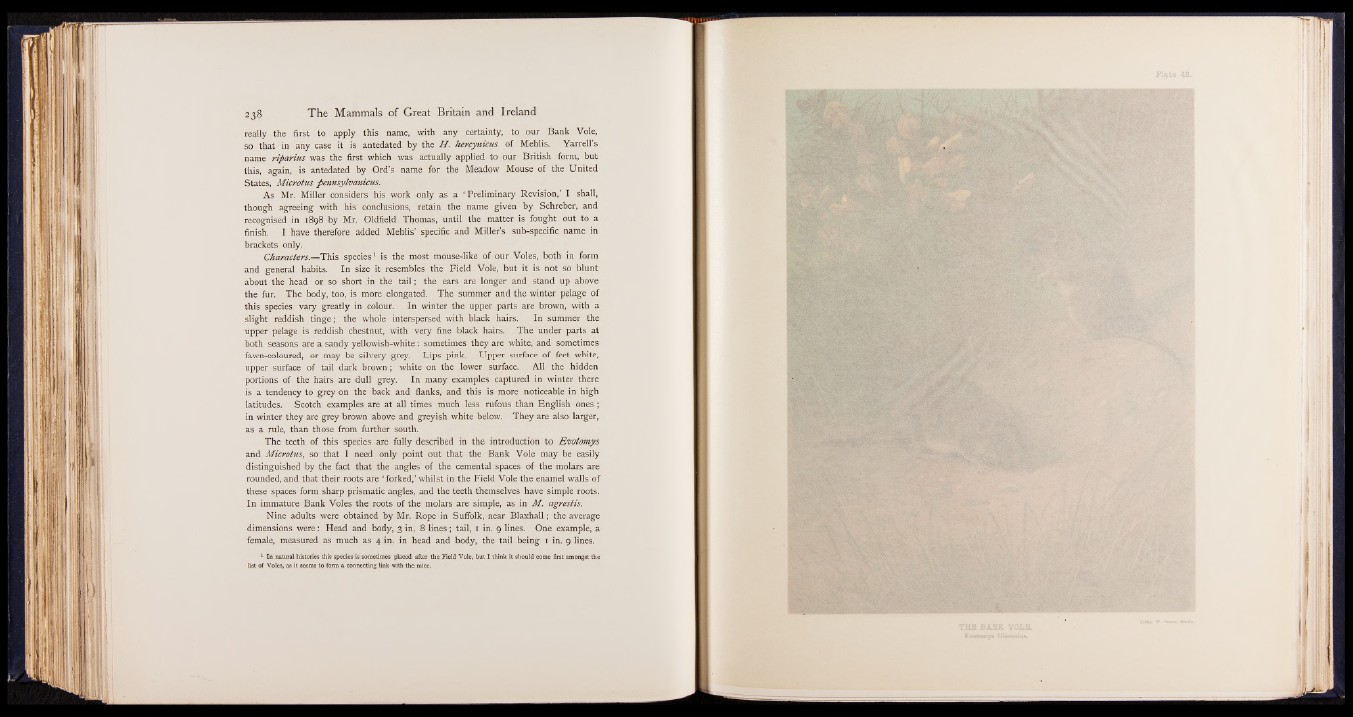
238 The Mammals of Great Britain and Ireland
really the first to apply this name, with any certainty, to our Bank Vole,
so that in any case it is antedated by the H . hercynicus of Mehlis. Yarrell’s
name rip ariu s was the first which was actually applied to our British form, but
this, again, is antedated by Ord’s name for the Meadow Mouse of the United
States, Microtus pennsylvanicus.
As Mr. Miller considers his work only as a ‘ Preliminary Revision,’ I shall,
though agreeing with his conclusions, retain the name given by Schreber, and
recognised in 1898 by Mr. Oldfield Thomas, until the matter is fought out to a
finish. I have therefore added Mehlis’ specific and Miller’s sub-specific name in
brackets only.
Characters.—This species1 is the most mouse-like of our Voles, both in form
and general habits. In size it resembles the Field Vole, but it is not so blunt
about the head or so short in the tail; the ears are longer and stand up above
the fur. The body, too, is more elongated. The summer and the winter pelage of
this species vary greatly in colour. In winter the upper parts are brown, with a
slight reddish tinge; the whole interspersed with black hairs. In summer the
upper pelage is reddish chestnut, with very fine black hairs. The under parts at
both seasons are a sandy yellowish-white: sometimes they are white, and sometimes
fawn-coloured, or may be silvery grey. Lips pink. Upper surface of feet white,
upper surface of tail dark brown; white on the lower surface. All the hidden
portions of the hairs are dull grey. In many examples captured in winter there
is a tendency to grey on the back and fianks, and this is more noticeable in high
latitudes. Scotch examples are at all times much less rufous than English ones ;
in winter they are grey brown above and greyish white below. They are also larger,
as a rule, than those from further south.
The teeth of this species are fully described in the introduction to Evotomys
and Microtus, so that I need only point out that the Bank Vole may be easily
distinguished by the fact that the angles of the cemental spaces of the molars are
rounded, and that their roots are ‘ forked,’ whilst in the Field Vole the enamel walls of
these spaces form sharp prismatic angles, and the teeth themselves have simple roots.
In immature Bank Voles the roots of the molars are simple, as in M. agrestis.
Nine adults were obtained by Mr. Rope in Suffolk, near Blaxhall; the average
dimensions were: Head and body, 3 in. 8 lines; tail, 1 in. 9 lines. One example, a
female, measured as much as 4 in. in head and body, the tail being 1 in. 9 lines.
1 In natural histories this species is sometimes placed after the Field Vole, but I think it should come first amongst the
list of Voles, as it seems to form a connecting link with the mice.